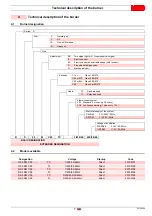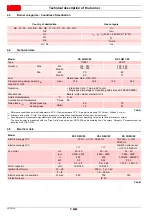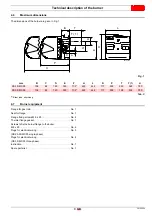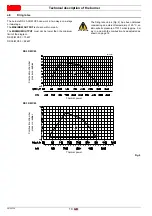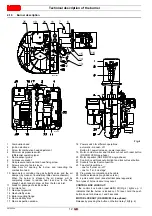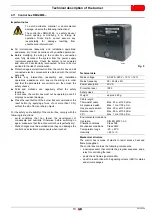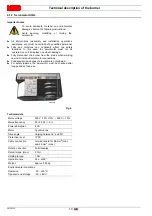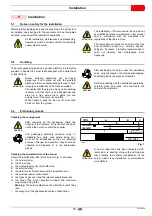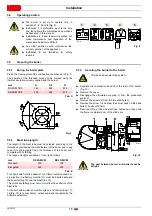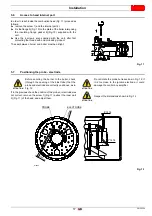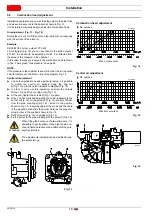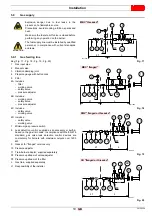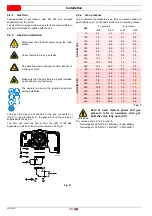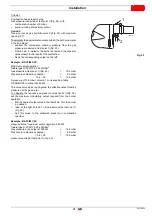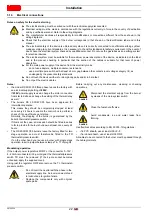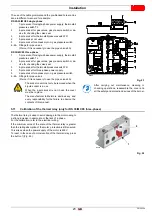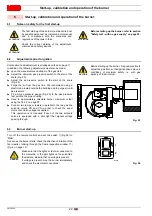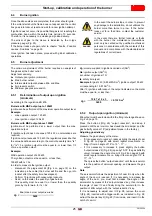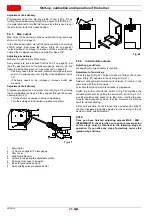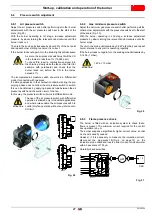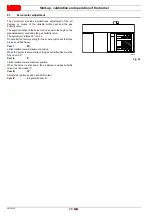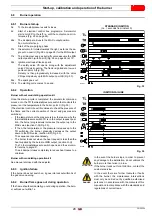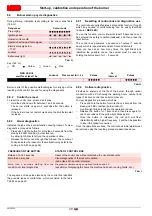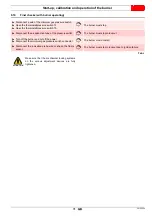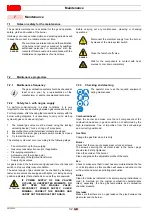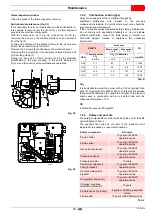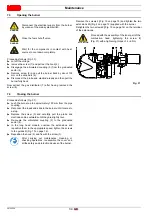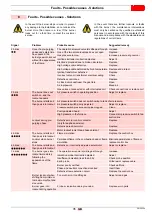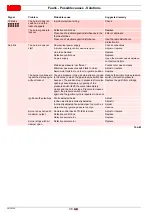
21
20159324
GB
Installation
Column 1
Combustion head pressure drop.
Gas pressure measured at test point 1)(Fig. 22), with:
•
combustion chamber at 0 mbar;
•
burner working at maximum output
Column 2
Pressure loss at gas butterfly valve 2)(Fig. 22) with maximum
opening: 90°.
To calculate the approximate output at which the burner operates
in the 2nd stage:
–
subtract the combustion chamber pressure from the gas
pressure measured at test point 1)(Fig. 22).
–
Find in Tab. F related to the burner concerned, the pressure
value closest to the result of the subtraction.
–
Read the corresponding output on the left.
Example - RS 35/M C05:
Maximum output operation
Natural gas G 20 NCV 9.45 kWh/Sm
3
Gas pressure at test point 1)(Fig. 22)
=
15.6 mbar
Pressure in combustion chamber
=
2.0 mbar
15.6 - 2.0
=
13.6 mbar
A pressure of 13.6 mbar, column 1, corresponds in table
RS 35/M C05 to output of 360 kW.
This value serves as a rough guide; the effective output must be
measured at the gas meter.
To calculate the required gas pressure at test point 1)(Fig. 22),
set the maximum modulating output required from the burner
operation:
–
find the nearest output value in the table Tab. F for the burner
in question.
–
read, on the right (column 1), the pressure at the test point 1)
(Fig. 22).
–
Add this value to the estimated pressure in combustion
chamber.
Example - RS 35/M C05:
Required burner maximum output operation: 360 kW
Natural gas G 20 NCV 9.45 kWh/Sm
3
Gas pressure at an output of 360 kW
=
13.6 mbar
Pressure in combustion chamber
=
2.0 mbar
13.6 + 2.0
=
15.6 mbar
pressure required at test point 1)(Fig. 22).
Fig. 22
2
1
S8738

